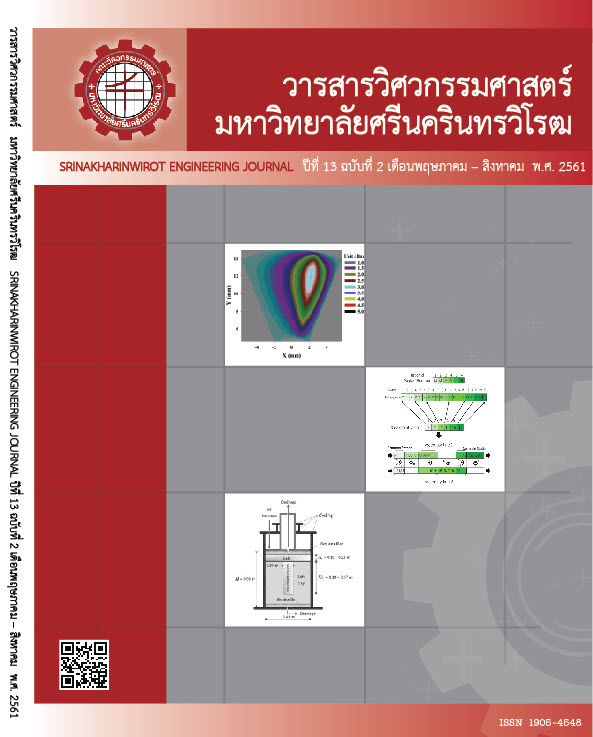Laboratory Model Testing for Investigating the Consolidation Behavior of Soft Clayey Deposit Improved by a Floating Soil-Cement Column with a Cement Stabilized Slab
Main Article Content
Abstract
This research aims to investigate the consolidation behavior of soft clayey deposit improved by the floating soil cement column with the cement stabilized slab on the ground surface by the laboratory model test. The cylinder mold with 0.45 m in diameter and 0.8 m in height was used for the laboratory model test. Four cases of testing were conducted for investigating the effect of slab thickness and undrained shear strength of slab. The other parameters as the area improvement ratio, the depth improvement ratio and loading intensity were fixed. Bangkok clay was used as soil sample for making a soft clayey deposit. As results, it can be seen that the increase of slab thickness reduces the consolidation settlement significantly. The undrained shear strength of slab effects on the consolidation behavior slightly. The existing method of Pongsivasathit et al. was applied to 4 cases of laboratory test for estimating the final consolidation settlement. The calculated results were compared with the measured results. Obviously, this method over-predicts gradually the settlement when the slab thickness increases gradually.
Article Details
Copyright belongs to Srinakharinwirot University Engineering Journal
References
[2] B. B. Broms and P. O. Boman, “Lime column a new foundation method,” J. Geotec. Eng. D, ASCE, vol. 105, no. GT4, pp. 539-556, 1979.
[3] J. C. Chai, N. Miura, T. Kirekawa and T. Hino, “Settlement prediction for soft ground improved by columns,” Proc. Inst. Civil Eng - Ground Improvement, vol. 163, no. 2, pp. 109-119, 2010.
[4] J. C. and S. Pongsivasathit, “A method for calculating consolidation settlements of floating column improved clayey subsoil,” Frontiers Arch. Civil Eng., vol. 4, no. 2, pp. 241-251, 2010.
[5] Japanese Institute of Construction Engineering (JICE), “Flexible foundation,” in Foundation Structure Part. Design Code for Flexible Box Culvert-II, Tokyo: San-kai-dou Press (in Japanese), 1999, pp. 233-248.
[6] S. Pongsivasathit, J. C. Chai and W. Q. Ding, “Consolidation Settlement of floating-column-improved soft clayey deposit,” Proc. Inst. Civil Eng - Ground Improvement, vol. 166, no. 1, pp. 44-58, 2013.
[7] S. L. Shen, J. C. Chai and N. Miura, “Stress distribution in composite ground of column-slab system under road pavement,” in the 1st Asian-Pacific Congress on Computational Mechanics, Sydney, 2001, pp. 485-490.

